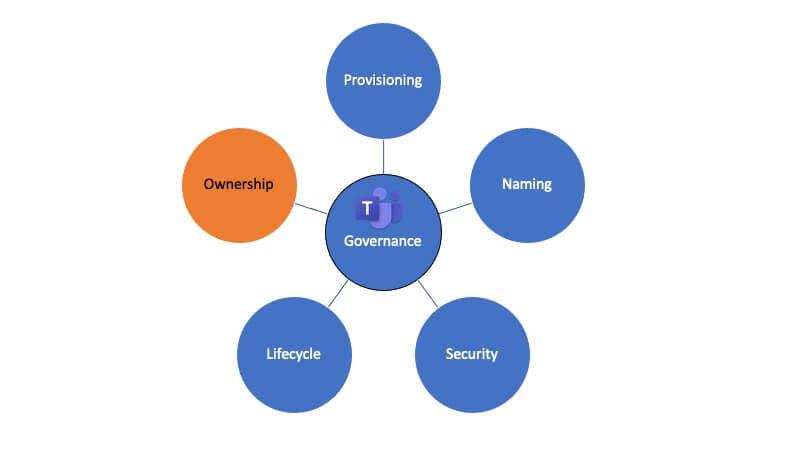5 Steps for Successful Microsoft Teams Governance – Step 5: Ownership
This is the fifth blog and final in our series of five articles based on the recent presentation delivered by ProvisionPoint’s CEO, Peter Baddeley, at the South Coast Summit back in October 2021.
Peter has been looking at five key areas which organisations can address in order to simplify the governance of Microsoft Teams, covering provisioning, naming conventions, security, lifecycles, and ownership. He will also share his first-hand experiences how organisations have successfully implemented Teams governance.
In his fifth blog, Peter looks at Microsoft Teams Ownership.
Peter explains:
In the previous blog posts, we considered provisioning, naming, security and lifecycle.

The Role of a Team Owner
The role of the Team owner is essential to making each of these successful and to the overall governance of Teams. It is important to say that organisations can certainly improve the governance of Teams with the other four steps, but a successful strategy for Teams ownership will maximise the value.
Owners are very much core to the architecture of Microsoft Teams and the associated building block of Microsoft 365 Groups. Owners of a Microsoft Team are designed to be the people who manage a specific Team, in the delegated administrative model envisaged by Microsoft. The person who requests (provisions) a Team is typically one of the Owners and they will decide the name, within policies defined by the organisation. The Owners of the Team will manage who has access, both internally and/or externally, and will manage the lifecycle of the Team. In many organisations, Owners are more than just delegated administrators. They can be responsible for the content of the Team and be the person who enhances the capability of a Team with new apps. Team owners are also frequently the champions in the organisation who help drive effective adoption.
Microsoft Teams Ownership Does Not Have to be Complicated
The problem many organisations face is ensuring the continuity of ownership from Team creation, to ongoing management and ultimately archiving. There are some simple steps to ensure continuity of ownership, including always requiring at least two Team owners, processes to hand over Team ownership and regular checks for orphaned Teams with no active owners.
That brings us to the end of our blog series considering five key steps organisations can follow that will help them simplify the governance of Microsoft Teams. These posts draw on our first-hand experiences of working with organisations of all sizes in how they drive effective Teams governance. The important thing to understand is that governance does not have to be complicated, by considering the five simple steps of provisioning, naming, security, lifecycle and ownership.
In the meantime, if you would like to learn more Ownership, click here or simply contact us.
